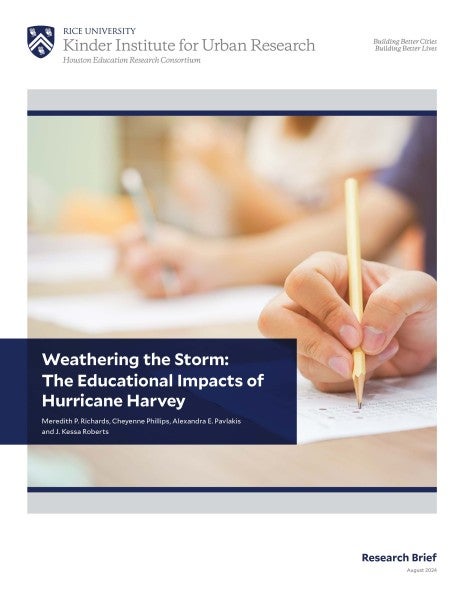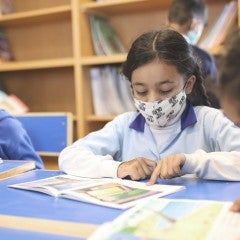In August 2017, the Houston area was ravaged by Hurricane Harvey. The second-costliest storm on record in the U.S., Harvey caused approximately $125 billion in damage overall and damaged more than 300,000 homes in Texas—including 25% of Houston’s affordable housing stock. Harvey's impact was particularly acute in schools: The Texas Education Agency estimated that over 1 million Texas students—20% of all students—were affected by the storm in some way.
In this two-part series of briefs, researchers examine the effects of Harvey on student homelessness in the Houston Independent School District (Houston ISD). Brief 1 identifies the characteristics of students who became homeless due to Harvey, comparing students who experienced more temporary stints to those who experienced homelessness for a year or more and those who experienced homelessness for more conventional reasons. Brief 2 looks at the educational outcomes of these students, including chronic absenteeism and achievement on State of Texas Assessment of Academic Readiness (STAAR) math and reading. The briefs conclude with implications of these findings for educational stakeholders in preparation for both generational and “everyday” homelessness crises.
Key findings
- Nearly 24,000 Houston ISD students became homeless due to Hurricane Harvey. For many of these students, homelessness was temporary—however, homelessness remained 41.8% higher in the year after the storm.
- More than 15,000 Houston ISD students lived, at least temporarily, in unsheltered contexts due to Harvey. Students lived in cars, encampments, abandoned buildings, substandard housing or on the streets.
- Students who became temporarily homeless for a year or less due to Harvey tended to fare as well as or better on educational outcomes (chronic absenteeism, STAAR reading, STAAR math) than even their never-homeless peers.
- Students who became homeless and remained homeless the next academic year had higher chronic absenteeism and lower achievement than students experiencing more temporary stints of homelessness.
- Across all outcomes, students experiencing homelessness for traditional reasons had substantially more adverse educational outcomes, highlighting the need for continued attention on this group.
The research team also produced “Uprooted: Voices of Student Homelessness,” a comic book that captures some of the diverse experiences of the nation's estimated 1 million homeless K-12 students through the eyes of four composite characters.






